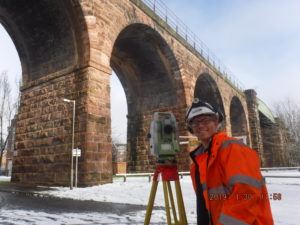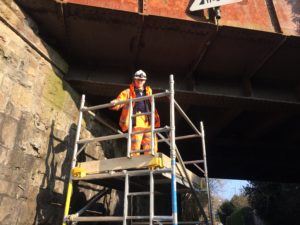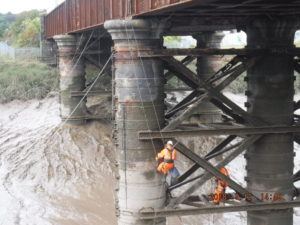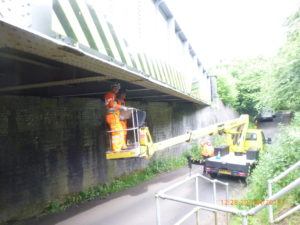Profile
Rory Shanks
Curriculum Vitae
-
Education:
Christ Church Primary & Junior School (until 2001), Wolverhampton Grammar School (until 2008), University of Bristol (until 2013)
-
Qualifications:
10 GCSEs, 1 BTEC, 5 A-Levels, 1 University Degree
-
Work History:
Newspaper delivery boy, convenience store sales assistant, gap year student at civil engineering consultancy firm, graduate engineer at the same civil engineering consultancy firm.
-
Current Job:
Senior bridge engineer for a civil engineering consultancy firm
-
Employer:

AECOM is a global infrastructure improvement company, providing professional consultancy services in planning, designing, engineering, consulting and construction of infrastructure, in architecture, transport, environment, sustainability, water, buildings, energy, and construction.
-
About Me
Hi, I'm Rory. I’m 30 years old, I live in Bristol and I work as a bridge engineer.
-
Read more
I grew up in the West Midlands but now live in Bristol with my girlfriend. I came to Bristol to study and loved it so much I stayed! I like travelling to new places – earlier this year I got stuck in the mountains in Peru for 3 weeks!

Peru
Luckily I eventually got back home to Bristol. Here I love playing board games, running out in the countryside and drawing.
-
My Work
I help to design, build and repair bridges. I work on all sorts of bridges – road bridges, railway bridges, bridges for people, and canal bridges.
-
Read more
I work in a team and we help each other to look after the bridges. We go all over the UK and work in lots of different places. Here we are working on a bridge near Bristol – Sea Mills Viaduct. We used a boat to get close to the bridge because it crossed a river.

Next, here I am working on a big stone arch bridge near Chester. I’m using a laser scanning machine to scan the shape of the bridge.

Sometimes the bridges are very old, and they start to crack, or the bricks start to crumble away, or the metal starts to rust. We have to work together to inspect the bridge as a team to spot all the problems and think how to repair them.
Sometimes we work from ladders:

Or we can work from scaffolding:

Or we can work using ropes:

Or we can work from a machine that has a long arm and lifts us up to the bridge in a basket:

The machine is called a MEWP.
Once we have all the photos and information we need, we bring it back to the office and write a report on the bridge condition.
-
My Typical Day: On a typical day in the office, I normally turn my laptop on to start work at 8:30am. I have meetings with my colleagues and we work together on our bridges. We add photos to reports or we might be doing some maths to find out how safe the bridge is. Sometimes we use special software to do drawings for design work, or phone an expert for advice on a new product to help maintain the bridges. A typical day out on site is very different to being in the office! We have to do a lot of preparation to make sure we are ready before we go out, checking we have the right equipment and information.
-
Read more
A Typical Day Out On Site, Visiting a Bridge.
A typical day on site is hard to describe because every bridge is unique! Here is an example timeline:
8am: Breakfast.
8:30am: I set off in my car to visit the bridge.
9:30am: I meet my work team at the bridge. We put on our Personal Protective Equipment (PPE) – orange clothes (so we are more visible!), hard hat, sturdy boots, gloves, and safety spectacles.
Here’s me wearing my PPE:

9:45am: Have a “briefing” (team talk) to raise any safety issues, and to decide how we are going to inspect the bridge.
10:00am: We set up a “Safe System of Work”. This means that we are protected from the hazards around us. If we are working on a road, the “Safe System of Work” could be a closure of the road so that cars don’t drive too close to us. If we are working on the railway, we will make sure the trains have stopped so they don’t run us over!
Here we have closed the road so that we can work in the middle of the road to reach the bridge:

10:30am: We start working on the bridge, working in teams, using ladders or scaffold or a machine. One person uses tools on the bridge (measuring tools like rulers, tape measures, laser distance measures, hammer, and chalk to circle any problems or cracks). The other person makes sketches and notes on paper and takes photos using a camera.
Here we are using a spirit level to check the bottom of the girder is straight:

1pm: We stop for lunch.
2pm: We move around the bridge to make sure we have checked it all.
5pm: We check with our team mates that we’ve covered the whole bridge and pick up any final details.
5:15pm: We pack our equipment back into the cars we came in.
5:30pm: We all drive home.
-
My Interview
-
How would you describe yourself in 3 words?
Reliable, meticulous, and methodical.
What's the best thing you've done in your career?
Helped to build a new motorway in Russia.
What or who inspired you to follow your career?
The skyscrapers of New York.
What was your favourite subject at school?
Design and Technology.
What did you want to be after you left school?
A civil engineer.
Were you ever in trouble at school?
Never!
If you weren't doing this job, what would you choose instead?
Maybe farming.
Who is your favourite singer or band?
Red Hot Chili Peppers
What's your favourite food?
Battered sausage and chips :P
What is the most fun thing you've done?
Volcano climbing in Ecuador!
If you had 3 wishes for yourself what would they be? - be honest!
1) I wish I had more time! 2) I wish I could speak foreign languages. 3) I wish I could play an instrument.
Tell us a joke.
The optimist says: “The glass is half full.” The pessimist says: “The glass is half empty.” The engineer says: “The glass is twice as big as it needs to be.”
-
